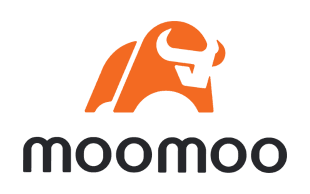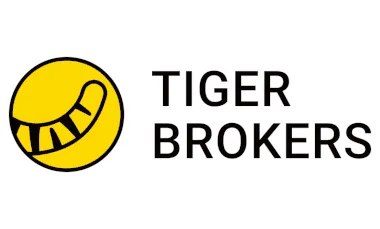Our top pick for
24/5 trading

Lockheed Martin Corporation (LMT) is a leading aerospace & defense business with stocks listed in the US. It closed the previous market day at US$468.05. During the previous open market day, the price has varied from a low of USD465.73 to a high of USD471.59. Lockheed Martin Corporation is listed on the NYSE. All prices are listed in US Dollars.
Our top pick for
24/5 trading

Our top pick for
Copy trading

Our top pick for
Mobile app

Lockheed Martin Corporation's shares were split on a 2:1 basis on 3 January 1999. So if you had owned 1 share the day before the split, the next day you would own 2 shares. This wouldn't directly have changed the overall worth of your Lockheed Martin Corporation shares – just the quantity. However, indirectly, the new 50% lower share price could have impacted the market appetite for Lockheed Martin Corporation shares which in turn could have impacted Lockheed Martin Corporation's share price.
| 52-week range | US$403.3566 - US$615.0918 |
|---|---|
| 50-day moving average | US$519.28 |
| 200-day moving average | US$512.5397 |
| Target price | US$576.1191 |
| PE ratio | 16.9566 |
| Dividend yield | US$12.6 (2.85%) |
| Earnings per share (TTM) | US$27.65 |
Use the fields above to explore the returns from a historical investment. Please refer to the charts further up this page to see performance over 5 years, or other periods. Past performance doesn't indicate future results. Capital is at risk.
Historical closes compared with the last close of $468.05
| 1 week (2025-01-07) | 0.88% |
|---|---|
| 1 month (2024-12-13) | -5.38% |
| 3 months (2024-10-14) | -23.38% |
| 6 months (2024-07-12) | 0.93% |
| 1 year (2024-01-12) | 1.05% |
|---|---|
| 2 years (2023-01-13) | 4.05% |
| 3 years (2022-01-14) | 25.61% |
| 5 years (2020-01-14) | 12.47% |
We currently don't have a partnership for that product, but we have other similar offers to choose from (how we picked these ):
The technical analysis gauge below displays real-time ratings for the timeframes you select. However, this is not a recommendation. It represents a technical analysis based on the most popular technical indicators: Moving Averages, Oscillators and Pivots. Finder might not concur and takes no responsibility.
Valuing Lockheed Martin Corporation stock is incredibly difficult, and any metric has to be viewed as part of a bigger picture of Lockheed Martin Corporation's overall performance. However, analysts commonly use some key metrics to help gauge the value of a stock.
Lockheed Martin Corporation's current share price divided by its per-share earnings (EPS) over a 12-month period gives a "trailing price/earnings ratio" of roughly 17x. In other words, Lockheed Martin Corporation shares trade at around 17x recent earnings.
That's relatively low compared to, say, the trailing 12-month P/E ratio for the NASDAQ 100 at the end of 2019 (27.29). The low P/E ratio could mean that investors are pessimistic about the outlook for the shares or simply that they're under-valued.
Lockheed Martin Corporation's "price/earnings-to-growth ratio" can be calculated by dividing its P/E ratio by its growth – to give 3.7965. A low ratio can be interpreted as meaning the shares offer better value, while a higher ratio can be interpreted as meaning the shares offer worse value.
The PEG ratio provides a broader view than just the P/E ratio, as it gives more insight into Lockheed Martin Corporation's future profitability. By accounting for growth, it could also help you if you're comparing the share prices of multiple high-growth companies.
Lockheed Martin Corporation's EBITDA (earnings before interest, taxes, depreciation and amortisation) is US$10.2 billion (£8.1 billion).
The EBITDA is a measure of a Lockheed Martin Corporation's overall financial performance and is widely used to measure stock profitability.
Over the last 12 months, Lockheed Martin Corporation's shares have ranged in value from as little as US$403.3566 up to US$615.0918. A popular way to gauge a stock's volatility is its "beta".
Beta measures a share's volatility in relation to the market. The market (NYSE average) beta is 1, while Lockheed Martin Corporation's is 0.481. This would suggest that Lockheed Martin Corporation's shares are less volatile than average (for this exchange).
| Revenue TTM | US$71.3 billion |
|---|---|
| Operating margin TTM | 12.69% |
| Gross profit TTM | US$8.4 billion |
| Return on assets TTM | 9.99% |
| Return on equity TTM | 81.04% |
| Profit margin | 9.36% |
| Book value | 30.508 |
| Market capitalisation | US$111.1 billion |
| EBITDA | US$10.2 billion |
TTM: trailing 12 months
Dividend payout ratio: 45.67% of net profits
Recently Lockheed Martin Corporation has paid out, on average, around 45.67% of net profits as dividends. That has enabled analysts to estimate a "forward annual dividend yield" of 2.85% of the current stock value. This means that over a year, based on recent payouts (which are sadly no guarantee of future payouts), Lockheed Martin Corporation shareholders could enjoy a 2.85% return on their shares, in the form of dividend payments. In Lockheed Martin Corporation's case, that would currently equate to about $12.6 per share.
While Lockheed Martin Corporation's payout ratio might seem fairly standard, it's worth remembering that Lockheed Martin Corporation may be investing much of the rest of its net profits in future growth.
Lockheed Martin Corporation's most recent dividend payout was on 26 December 2024. The latest dividend was paid out to all shareholders who bought their shares by 1 December 2024 (the "ex-dividend date").
Environmental, social and governance (known as ESG) criteria are a set of three factors used to measure the sustainability and social impact of companies like Lockheed Martin Corporation.
When it comes to ESG scores, lower is better, and lower scores are generally associated with lower risk for would-be investors.
Total ESG risk: 33.53
Socially conscious investors use ESG scores to screen how an investment aligns with their worldview, and Lockheed Martin Corporation's overall score of 33.53 (as at 12/31/2018) is nothing to write home about – landing it in it in the 60th percentile of companies rated in the same sector.
ESG scores are increasingly used to estimate the level of risk a company like Lockheed Martin Corporation is exposed to within the areas of "environmental" (carbon footprint, resource use etc.), "social" (health and safety, human rights etc.), and "governance" (anti-corruption, tax transparency etc.).
Environmental score: 9.16/100
Lockheed Martin Corporation's environmental score of 9.16 puts it squarely in the 5th percentile of companies rated in the same sector. This could suggest that Lockheed Martin Corporation is a leader in its sector terms of its environmental impact, and exposed to a lower level of risk.
Social score: 19.63/100
Lockheed Martin Corporation's social score of 19.63 puts it squarely in the 5th percentile of companies rated in the same sector. This could suggest that Lockheed Martin Corporation is a leader in its sector when it comes to taking good care of its workforce and the communities it impacts.
Governance score: 9.74/100
Lockheed Martin Corporation's governance score puts it squarely in the 5th percentile of companies rated in the same sector. That could suggest that Lockheed Martin Corporation is a leader in its sector when it comes to responsible management and strategy, and exposed to a lower level of risk.
Controversy score: 3/5
ESG scores also evaluate any incidences of controversy that a company has been involved in. Lockheed Martin Corporation scored a 3 out of 5 for controversy – a middle-of-the-table result reflecting that Lockheed Martin Corporation hasn't always managed to keep its nose clean.
Lockheed Martin Corporation was last rated for ESG on: 2019-01-01.
| Total ESG score | 33.53 |
|---|---|
| Total ESG percentile | 59.58 |
| Environmental score | 9.16 |
| Environmental score percentile | 5 |
| Social score | 19.63 |
| Social score percentile | 5 |
| Governance score | 9.74 |
| Governance score percentile | 5 |
| Level of controversy | 3 |
Lockheed Martin Corporation, a security and aerospace company, engages in the research, design, development, manufacture, integration, and sustainment of technology systems, products, and services worldwide. The company operates through Aeronautics, Missiles and Fire Control, Rotary and Mission Systems, and Space segments. The Aeronautics segment offers combat and air mobility aircraft, unmanned air vehicles, and related technologies. The Missiles and Fire Control segment provides air and missile defense systems; tactical missiles and air-to-ground precision strike weapon systems; logistics; fire control systems; mission operations support, readiness, engineering support, and integration services; manned and unmanned ground vehicles; and energy management solutions. The Rotary and Mission Systems segment offers military and commercial helicopters, surface ships, sea and land-based missile defense systems, radar systems, sea and air-based mission and combat systems, command and control mission solutions, cyber solutions, and simulation and training solutions. The Space segment offers satellites; space transportation systems; strategic, advanced strike, and defensive systems; and classified systems and services in support of national security systems. This segment also provides network-enabled situational awareness and integrates space and ground global systems to help its customers gather, analyze, and securely distribute critical intelligence data. It serves primarily serves the U.S. government, as well as foreign military sales contracted through the U.S. government. The company was formerly known as The Lockheed Corporation and changed its name to Lockheed Martin Corporation in March 1995. Lockheed Martin Corporation was founded in 1912 and is based in Bethesda, Maryland.



The two easiest ways to buy Japanese stocks from Australia.
CHESS sponsorship allows you to directly own ASX listed shares in your own name, but it comes with some drawbacks. Find out if it's right for you.
We used Finder's proprietary algorithm to find the 10 best stocks under $10 on the ASX.
We used Finder's proprietary algorithm to find Australian-listed companies that have strong fundamentals and have a share price under $5.
Big gainers included Dimerix, Larvotto Resources and Microba Life Sciences.
Top gainers included Pantoro, Ora Banda Mining and FireFly Metals.
The coronavirus pandemic is battering global markets, so how has the Australian stock market fared?
Here are our algorithm-selected 20 Aussie stocks worth watching in 2025.
Find out how you can invest in Nasdaq and compare a range of leading brokers that let you invest in US stocks cheaply and quickly.
Looking to build your wealth? A guide on the investment accounts available in Australia.